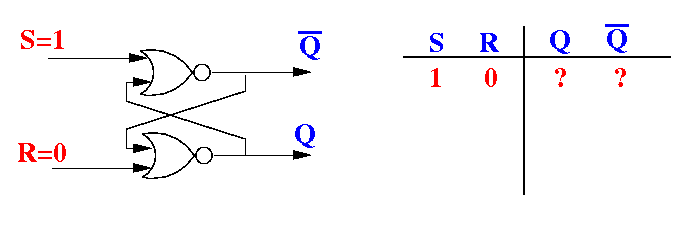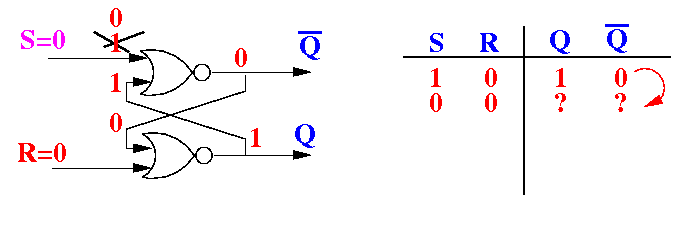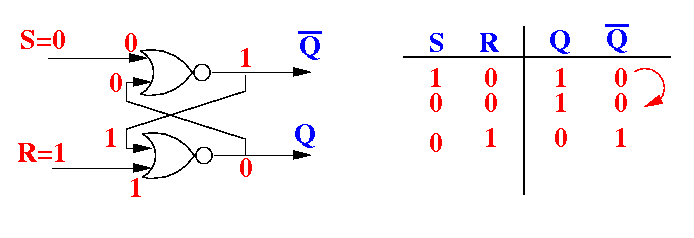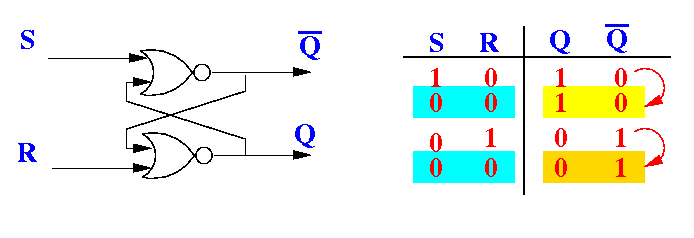|
Consider the following digital circuit:

|
Notice that the SR-latch has a feedback loop:

The output signals (can we cannot control) are used as input signals into the SR-latch circuit
In other words: the input values for the Nor gates are:

The output signals (that we cannot control) are used as input signals into the SR-latch circuit
We will now study the behavior of the SR-latch:

Note: the behavior of sequential circuits is dependent on the current state of the circuit !!
Therefore: to observe a certain behavior, we must "go through" more than 1 state of the circuit !
What is the outputs of the SR-latch for S=1 and R=0 ?

What is the outputs of the SR-latch for S=1 and R=0 ? Answer:

Notice that the state is stable (the feedback loop does not alter the input values)
Note: the inputs S=1 and R=0 represents the "set" function (S = set) that makes the output Q = 1
While the SR-latch is in this state, we change the input values to S=0 and R=0:

What are the new output values of the SR-latch circuit ?
While the SR-latch is in this state, we change the input values to S=0 and R=0: - Answer:

The output (state) remains unchanged !
Note: S=0 and R=0 represents the "remember" function (outputs are unchanged)
What is the outputs of the SR-latch for S=0 and R=1 ?

What is the outputs of the SR-latch for S=0 and R=1 ? Answer:

Notice that the state is also stable (the feedback loop does not alter the input values)
Note: S=0 and R=1 represents the "reset" function that makes the Q output = 0
While the SR-latch is in this state, we change the input values to S=0 and R=0:

What are the new output values of the SR-latch circuit ?
While the SR-latch is in this state, we change the input values to S=0 and R=0: - Answer:

The output (state) remains unchanged !
Note: S=0 and R=0 represents the "remember" function (outputs are unchanged)
In combinatorial circuits: the output values is only dependent on the (current) input values

The outputs (Q and Q) are different for the same input values S=0, R=0 !!
Therefore, the SR-latch cannot be a combinatorial circuit !!!
|